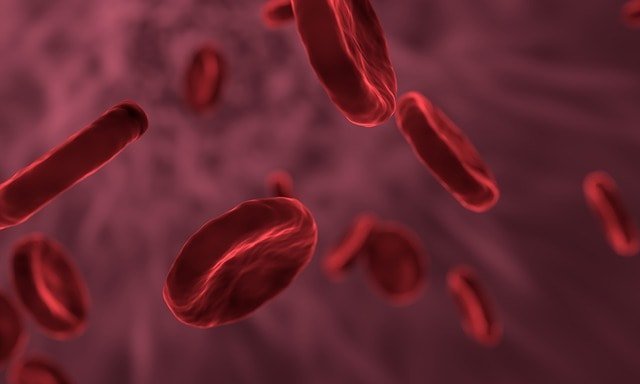 Having Thalassemia is not something that you can prevent, you either have it or you don’t (but you could be a carrier of the disease – more on that later).
Having Thalassemia is not something that you can prevent, you either have it or you don’t (but you could be a carrier of the disease – more on that later).
It’s a genetic blood disorder that can affect multiple parts of your life and is characterized by defective hemoglobin production and less red blood cell count.[1] Some people don’t need treatment, however, others with more severe cases do.
There are two types of Thalassemia which include alpha-thalassemia, and beta thalassemia.
Some of the symptoms that you might have to deal with or notice in either of them could be fatigue, weakness, jaundice, bone deformities, growth issues, abdominal swelling and dark urine.[2]
Some people see these issues at birth, others could develop symptoms within the first two years, and some (carriers with only one gene) might not have any.
While there are a lot of symptoms and signs, and things to worry about especially as a new parent, we must consider its effects on mother and baby during pregnancy.
Multi-Disciplinary Care
When it comes to Thalassemia, there should be care from multiple providers before and during pregnancy.[3]
If a woman with thalassemia is wishing to conceive, she should consult a team of specialists to analyze and explain the probable outcomes of her pregnancy.
The reason for this is that there are different complications that can potentially arise that one doctor might not be specialized in.
Having a care team can mitigate the symptoms and discuss the case to get you and your child the best care possible.
One of the possible complications that can arise in such cases is raised levels of iron in the body, which can cause damage to the bones, organs, and hormones leading to heart failures one of the outcomes.[4]
Additional problems can come along during pregnancy that can be a cause for concern. There is an increased risk of maternal cardiomyopathy and diabetes in addition to fetal growth restriction.[5]
While pregnant (and while trying as well) a cardiologist and hematologist[6], as well as your regular OB-GYN, should be helpful in creating a plan, along with monthly check-ups, to ensure a healthy pregnancy.
The pregnancy also holds the chance of worsening of disease symptoms.
One reason for increase morbidity is the rise in blood volume which could lead to dilutional anemia. This could lead to the need for a transfusion as well.[7]
However, taking folic acid could help prevent the severity of the anemia. With this condition, the pregnancy would be considered high-risk and therefore followed extremely carefully to maintain the health of both the mother and the baby.
What To Expect
Depending on the severity of Thalassemia, you might experience a few different types of treatments for yourself or for your child.
For those who are dealing with the most severe cases, especially alpha thalassemia major patients, a few fetal interventions will be considered.
One would be an intrauterine transfusion, which gives red blood cells to the fetus through the umbilical cord.[8]
This might also not be a one-time thing and could eventually move to stem cell transplants which can potentially cure the disease completely.
Research is being done for in utero stem cell transplants with the mother being the donor, which can, as stated above, cure he disease before the baby is even born.[9]
There are also some serious considerations for the mother as well.
Even though taking care of the infant is important it was discussed briefly earlier that the mother will need to have monthly appointments throughout the 28th week and then every 2 weeks until the baby is born.[10]
While there is always a possibility of preterm labor and birth for any woman, those with thalassemia are at a higher risk due to issues such as poor maternal condition, fetal distress, multiples, hypertension, diabetes, placental abruption and UTI’s[11] among other things.
During Delivery
This is something specific to each mother. If the mother is not only a carrier but also suffers from thalassemia, there are some specific considerations.
It is recommended that for pain management, an epidural is used instead of general anesthesia due to potential deformities in the facial structure.[12]
However, this is a case by case basis and depends again on the severity of the disease.
If considering vaginal delivery, active management is required during the entire process, including continuous fetal monitoring as there is an increased risk of fetal hypoxia.[13]
During pregnancy, mothers that are also encountering transfusion should be partaking in chelation therapy to reduce no-transferrin-bound iron and intravenous DFO should be given throughout the duration of labor as well.
Modern Medicine Has Made Reproduction Possible
While thalassemia is not an easy disease to live with and makes pregnancy difficult, it’s still possible with the improvement of testing and treatments for both the fetus and the mother.
Knowing the genetic makeup of both partners can also significantly alter the route of pregnancy and help to maintain a healthy fetus and pregnancy.
While the only cure as of now is stem cell transplantation, continuous fetal and maternal monitoring can minimize the complications and result in better pregnancy outcome.
The biggest takeaway is that if you are a carrier or are living with thalassemia, discuss options with your doctor before getting pregnant and then ensuring that you have continuous monitoring through gestation.
Also, make sure that you are taking care of yourself. While all the medical interventions in the world can help you have a healthier pregnancy, the most important is what you are doing for you and for your body.
Eat right, reduce stress and take care of yourself. Do those things and follow your doctors advice and you should be on your way to starting your family.
References
- Mayo Clinic. Thalassemia.. [link]
- See above #1
- Royal College of Obstetricians & Gynaecologists. New guideline for managing thalassaemia in pregnancy announced at the RCOG World Congress in India. [link]
- See above #3
- See above #3
- See above #3
- SickKids Hospital Staff via About Kids Health. Thalassemia and Pregnancy. [link]
- The Fetal Treatment Center. Alpha Thalassemia. [link]
- See above #8
- George Petrakos, Panagiotis Andriopoulos, and Maria Tsironi. Pregnancy in Women with Thalassemia: Challenges and Solutions. [link]
- See above #10
- See above #10
- See above #10
Image: Pixabay



